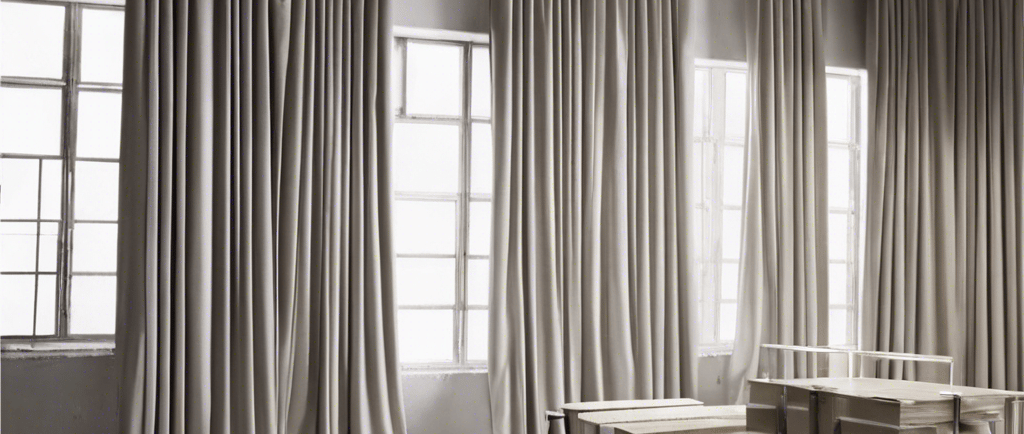The Ultimate Guide to Choosing the Right Curtain Fabric for Your Home
11/23/20245 min read


Understanding Your Needs: Functionality vs. Aesthetics
When it comes to selecting curtain fabric for your home, understanding your needs is crucial. Curtain fabric not only serves a decorative purpose but also fulfills various functional requirements. The first step in the decision-making process is to identify these essential aspects. Different rooms within your home may require different fabrics based on factors such as light control, privacy, thermal insulation, and sound absorption.
For example, if you are choosing curtains for a bedroom, privacy may be a primary concern, leading you to opt for thicker materials or blackout fabrics that not only block light effectively but also provide a sense of seclusion. In contrast, living spaces may benefit from lighter fabrics that allow natural light to filter through while still offering a level of visual separation. Additionally, for areas that experience temperature fluctuations, thermal insulation properties in curtain fabric can contribute to energy efficiency, while sound-absorbing materials can enhance comfort by minimizing noise levels.
Aesthetics also play a pivotal role in your fabric selection. The color, texture, and pattern of the curtain fabric significantly impact the overall look and feel of a room. When choosing colors, consider the existing decor and how different shades can either complement or contrast with other elements in your space. Texture further enriches the visual appeal; for instance, a rich, textured fabric can add depth, while a smooth, sheer curtain can evoke a sense of elegance and simplicity. Patterns, ranging from subtle to bold, can inject personality and create focal points within a room.
Balancing these functional and aesthetic considerations will allow you to make informed fabric choices that cater to both practical requirements and design aspirations, ensuring that your curtains enhance the overall atmosphere of your home while meeting your essential needs.
Types of Curtain Fabrics: Pros and Cons
Choosing the right curtain fabric involves understanding the different types available and their respective advantages and disadvantages. The most common categories of curtain fabrics are natural fibers, synthetic materials, and blends, each offering unique qualities that can influence your decision.
Natural fibers, such as cotton and linen, are popular for their breathability and aesthetic appeal. Cotton fabric is known for its softness and versatility, making it suitable for various styles, from casual to formal. However, it can be prone to fading when exposed to direct sunlight and may require more frequent washing due to dirt and dust accumulation. Linen, on the other hand, exudes a sophisticated charm with its slightly wrinkled texture, but it has a tendency to crease easily and can be less durable than other options.
In contrast, synthetic materials, including polyester and nylon, present a different set of benefits. Polyester is renowned for its durability and resistance to wrinkles, mildew, and fading, making it an excellent choice for high-traffic areas. Additionally, it is generally easy to clean and maintain, which appeals to busy homeowners. Nylon also offers durability and is often used in applications where strength is paramount. However, synthetic fabrics can lack the natural feel and breathability of their natural counterparts, potentially making them less desirable in certain settings.
Finally, blended fabrics combine the best features of both natural and synthetic materials. For instance, a cotton-polyester blend can offer improved durability while maintaining the softness of cotton. These blends often balance ease of maintenance with a pleasing aesthetic, making them a versatile choice for many homeowners. Nevertheless, their specific characteristics depend on the fiber ratio used, necessitating careful consideration based on individual needs.
Color and Pattern Selection: Creating the Right Mood
When it comes to choosing curtain fabric, understanding the psychology of color and pattern is essential for creating the desired ambiance in a room. Color theory plays a significant role in interior design, as different shades evoke various emotions and perceptions. For instance, warm colors such as reds and yellows often create a sense of coziness and energy, while cooler hues like blues and greens promote relaxation and calmness. By selecting the appropriate curtain color, you can enhance the mood of the space effectively.
In addition to color, the patterns on curtains also contribute to the overall aesthetic and emotional tone of the room. Geometric designs may evoke a contemporary feel, while floral patterns can bring a touch of nature indoors. Stripes can heighten the perception of space, making a room feel larger, while bold patterns can serve as a statement feature that draws the eye. It is essential to consider how these patterns will interact with other elements in the room, including furniture, wall colors, and accessories.
When coordinating curtain fabrics with existing furnishings, aim for harmony to create a cohesive look. You might consider choosing a color that complements the dominant hues found in your furniture or other décor elements. Alternatively, you could select patterns that reflect or echo existing motifs in the room. Being mindful of scale is also crucial. For example, large-patterned curtains may overwhelm a small room, while small patterns could offer a more understated elegance.
Ultimately, the key to successful color and pattern selection lies in striking a balance that enhances the overall decor while creating a welcoming atmosphere. By thoughtfully considering these elements, you can select curtains that not only beautify your space but also foster a specific mood, truly reflecting your personal style.
Care and Maintenance: Ensuring Longevity of Your Curtains
Curtains play a significant role in enhancing the aesthetic appeal and functionality of a home. Therefore, the proper care and maintenance of your chosen curtain fabrics are crucial to ensure their longevity. Different fabrics require varied approaches for both washing and cleaning. It is important to always consult the manufacturer's care label before deciding on a cleaning method. Generally, light curtains, such as sheer or synthetic blends, may be suitable for machine washing, while heavier materials like velvet or silk often necessitate handwashing or professional care.
When dealing with stains, prompt action is advisable. It is essential to identify the type of stain and fabric before applying any treatment. For most fabrics, a mild detergent diluted in water can be used for spot cleaning. For stubborn stains, consider using a specialized fabric cleaner, keeping in mind the need for thorough rinsing to prevent residue buildup. Testing a small area first can help avoid damaging the fabric.
Storing curtains correctly when they are not in use is as crucial as cleaning. Curtains should be stored in a cool, dry place, away from direct sunlight, which can cause fading. Folding curtains neatly rather than crumpling them can prevent crease marks, while using breathable garment bags can protect them from dust and pests. Regular assessments of the curtain's condition should be conducted to check for signs of wear or damage, such as fraying hemlines or discolored spots. Timely replacements can retain the room's aesthetic appeal and functionality.
For those who prefer a hands-off approach, hiring professional cleaning services can be beneficial. Many companies specialize in curtain cleaning and can manage delicate fabrics safely, ensuring that your curtains maintain their texture and color. Establishing a routine cleaning schedule can further extend the life of your curtains, keeping them looking fresh and inviting.
Curtains&Fabrics
Design,production,sales,service in curtain fabrics&curtians.
Quality
Products
sales01@anytextile.com
+8615968501933
© 2024. SHAOXING LEYAO IMPORT AND EXPORT CO.LTD All rights reserved.
